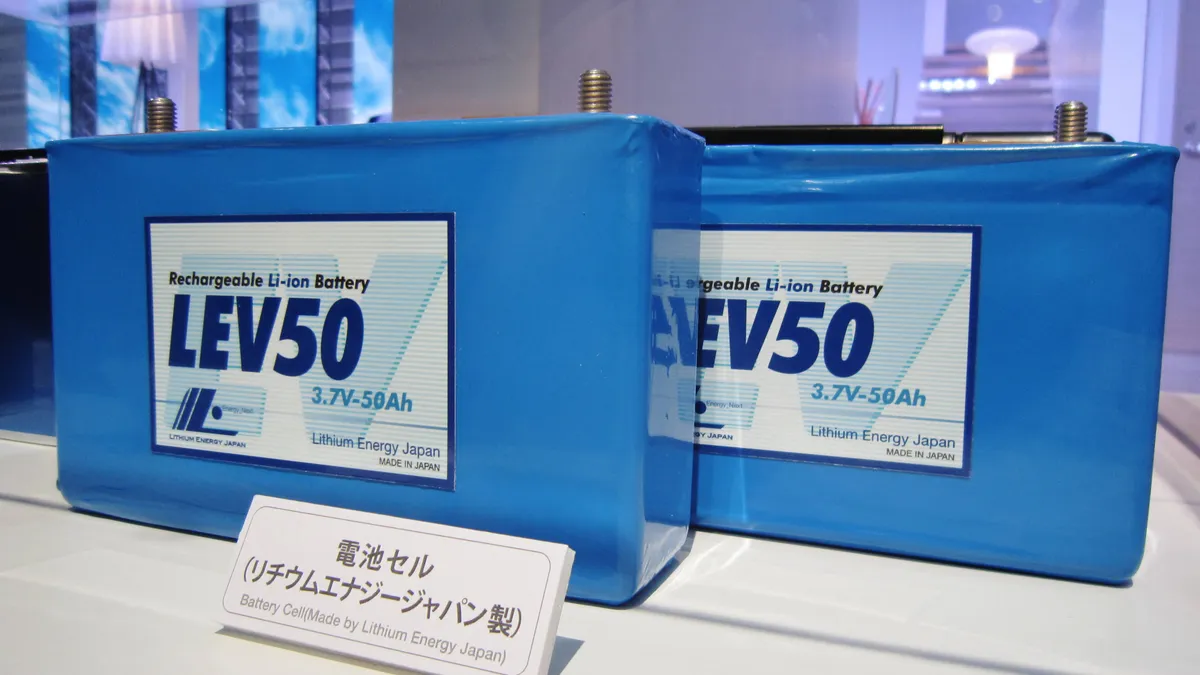Dive Brief:
- Global Market Insights released a report Monday estimating that the lithium-ion (li-ion) battery global market size will exceed $60 billion by 2024.
- The report tracks various li-ion chemistries, touting the batteries for their "better capacity, longer lifecycle, and improved efficiency when compared to available alternatives."
-
Bloomberg New Energy Finance (BNEF) raised its forecast for li-ion batteries last November, due to prices declining faster than expected. BNEF estimates $61 billion will be invested in li-ion between 2017 and 2024, Logan Goldie-Scot, head of energy storage at BNEF, emailed Utility Dive.
Dive Insight:
Li-ion has been taking off due to the ease of availability, high energy density of the batteries and their longer discharge cycles, according to the Global Market Insights report. Beyond electric vehicles and energy storage, the U.S. market will see changes due to the "growing adoption of smart devices coupled with [a] shift toward digitization across industrial and healthcare sector[s]," according to the report's summary.
BNEF estimates the 2024 annual investment will be approximately $13 billion, more than doubling the roughly $5 billion annual investment in 2018, Goldie-Scot said.
Automotive applications of li-ion are outpacing energy storage applications, the report notes, crediting electric vehicle adoption and government initiatives promoting "sustainable energy utilization."
The increasing adoption of automotive uses for the batteries are "what's driving the cost reductions and making it more feasible to use that technology for grid applications," David Hart, senior fellow at the Information Technology and Innovation Foundation, told Utility Dive.
"The experts that we've talked to have raised concerns that there may be some limits in terms of cost reduction, and kind of the best case scenario for lithium-ion is still going to fall short of potentially important grid applications, particularly the long-duration applications," Hart said.
While some believe that li-ion technology can meet a niche between short-term and long-term duration, the technology is not expected to cover more than a day of storage.
"We're thinking about policies that would allow these technologies to develop ... without getting in the way of continued rapid development of lithium-ion," Hart said.
The Global Market Insights report projects the energy storage and automotive li-ion markets more than doubling between 2016 and 2024.
China, which has enacted policies to generate electric vehicle demand, is expected to lead in li-ion production.
"On the supply side, I don't think there's any doubt that China is going to be the majority of production capacity," Hart said. The question is whether the country will have an imperative to export.
Hart noted that the li-ion battery market could go the way of the solar panel market, when "the Chinese just flooded the market and wiped everybody else out in terms of production." However, unlike solar panels, li-ion batteries already have a large internal market, he added.















